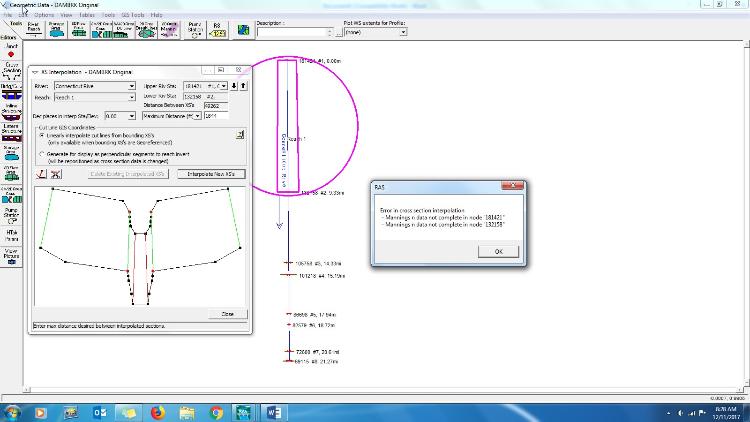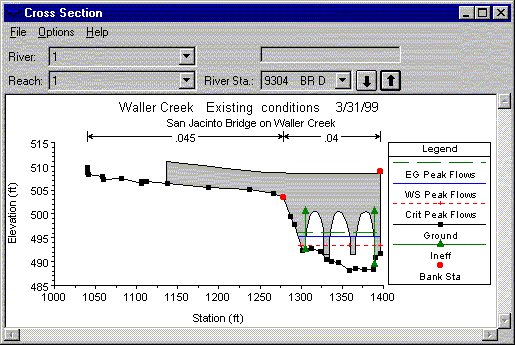

In the example below, the left abutment is Abutment #1. In the example below, the pier is 1 foot wide from the ground level to elevation 50, and transitions to 3 feet wide at elevation 63Ībutments are defined with station and elevation data from left to right. Piers are drawn from the ground to the first point with the specified pier width at a certain elevation. Piers can be added based on the centerline of the pier at the upstream and downstream sections. At this menu you can also add the type of weir crest that will define how flows are treated once the road is overtopped. The Deck/Roadway menu is also where the bridge width and distance to the upstream cross section can be input. If no low chord is defined, the bridge will extend straight down to the ground surface.

The deck or roadway of the bridge is defined similar to a cross section, with a station, high chord, and low chord. The bridge opening is defined by the upstream and downstream cross sections intersected with: If the bridge is overtopping, flow in the overbanks will likely contribute to the total conveyance.


The ratio is distance in the direction of flow compared to distance perpendicular to the direction of flow.ĭefining the elevation of ineffective flow areas at bridges can potentially require a bit of work, but is straightforward. Typically, it is appropriate to use a ratio of 1:1 for the ineffective flow area contraction (CR) and a ratio from 2:1 to 4:1 for the ineffective flow area expansion (ER). In these cases, ineffective flow areas are defined to ignore (for conveyance calculations) the areas where water is being stored and not conveyed. Modeling bridges generally requires ineffective flow areas because the profile of the bridge is typically an obstruction to flow in the overbanks, or possibly within the channel itself. Ineffective flow areas are used in HEC-RAS to represent areas where flow is not being conveyed. The bridge opening does not affect this cross section. Cross Section 1 represents the channel where the flows are already expanded.The losses associated with the Expansion Reach are represented with the expansion coefficient at Cross Section 2.Represents the area where flow is expanding from the bridge opening back to the channel (and overbanks).The Expansion Reach (from Cross Section 2 to Cross Section 1): Cross Section 4 represents the channel before the flows are contracted.The additional losses associated with the Contraction Reach are represented with the contraction coefficient at Cross Section 3.Represents the area where flow is contracting from the channel (and overbanks) into the bridge opening.The Contraction Reach (from Cross Section 4 to Cross Section 3):
#Hec ras n values manual
Bounding cross sections should represent the natural ground of the main channel and overbanks, and generally should not include embankments.Ī plan view of a bridge and bounding cross sections from the HEC-RAS Hydraulic Reference Manual is shown in the figure below.There are 2 cross sections upstream and 2 cross sections downstream of the bridge.The bridge routines in HEC-RAS use 4 cross sections to compute energy losses due to the structure.The bounding cross sections provide a means of analyzing the impacts of the bridge structure on the flow. Bounding Cross Sectionsīounding cross sections are a crucial aspect of bridge modeling in HEC-RAS. This post provides the information necessary to model a simple bridge using HEC-RAS. In order to appropriately model the energy loss due to a bridge in HEC-RAS, there are some things you should know.īridge modeling in HEC-RAS has several components: The obstruction to flow can be a source of substantial energy loss. In riverine systems, bridges typically represent an obstruction to channel and floodplain flow.


 0 kommentar(er)
0 kommentar(er)
